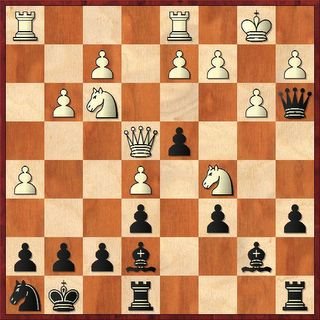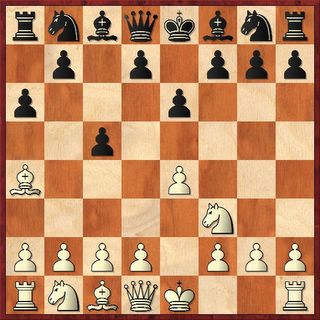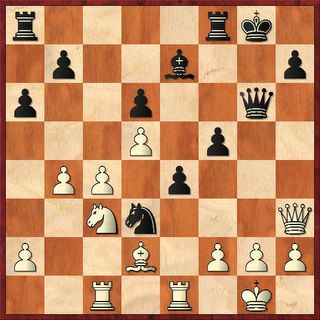2006 April Toledo Swiss, 4.8.2006
Spanish Opening: Bogolyubov Variation [C91]
1.e4 e5 2.Nf3 Nc6 3.Bb5 a6 4.Ba4 Nf6 5.0-0 b5 6.Bb3 Be7 7.Re1 0-0 8.c3 d6 9.d4 Bg4 This is the Spanish Bogolyubov variation
10.d5 Na5 11.Bc2 h6
I was out of book at this point. The book move was c6.
12.b3
The aim of the move is to take away c4 from the a5 knight. At the same time though, this seriously cramps the white light squared bishop, which was already bad due to the d4 pawn.
12...Bh5 13.h3 Qc8 14.Kh2 Nb7 15.b4
While this move does hamper the b7 knight, it also creates a weakness on c3.
15...a5 16.a3 axb4 17.cxb4
Black really had no way to get at the c3 pawn immediately, so instead he turned to opening lines for his rook.
17...c5 18.dxc6 Qxc6
The contrast between white's rooks and queen couldn't be any greater. The black queen is active on both an open file and diagonal. Both of whites rooks are defensively postured, meanwhile the black rooks stand ready to fire down the half open a-file or the open c-file.

19.Bb2 Qb6
I considered Bxf3 because the queen cannot recapture on f3. Therefore, the white king's pawn shield would be shattered.
20.Qe2 Nd8 21.Nbd2 Ne6
The once useless knight on a5 has been redeployed and now stands poised to jump to either d4 or f4.
22.g3 Rfc8 23.Bb3 Ng5
This move forces another pawn move in front of the white king.
24.g4 Nxf3+ 25.Qxf3 Bg6 26.Rac1 Nh7
The knight prepares to move forward to g5.
27.h4?
An oversight on the part of the white player. He missed the bishop perched on e7 controlling the h4 square.
27...Bxh4 28.Qg2?
White could have prevented the immediate loss of the f2 pawn with Rxc8+ or Kg2. 28...Bxf2 29.Rf1 Be3 30.Rcd1 Ng5 31.Bd5 Ra7 32.Nf3?
White gives away another pawn. Nb3 or Nb1 would have been better.
32...Bf4+ White has seen enough carnage and resigns. 0-1














